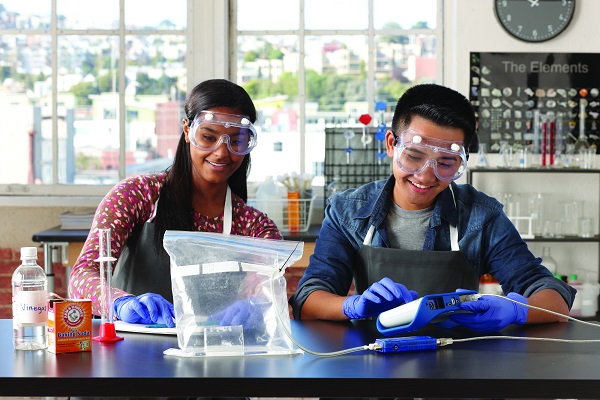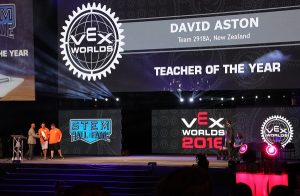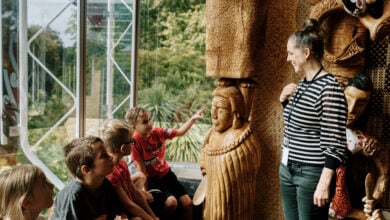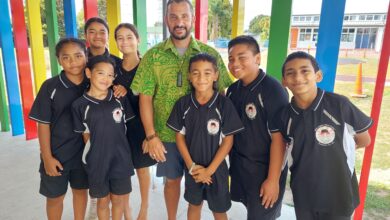Why it’s time to get serious about STEM education

A couple of weeks ago, a group of students from a decile six high school in New Zealand took out the supreme award at the biggest robotics competition on the planet. The teenagers rose to the top of 1072 teams from 40 different countries, an achievement nothing short of phenomenal. Even more astonishing is the fact that this is the second year running that a New Zealand high school has won the Supreme Excellence Award. Meanwhile, one of our teachers was named Teacher of the Year from a pool of 44,000 teachers – the first time the award had gone to a teacher outside of North America.
You could be forgiven for not knowing about this, however, as mainstream media in New Zealand did not consider it worthy of coverage. And it is this attitude, says robotics expert Chris Hamling, which is holding back New Zealand’s knowledge economy.
“I spoke to a major news outlet which I won’t name, and the response was, ‘Oh, we’ve done something on robotics before so we won’t do it again’,” says Mr Hamling, national manager of Kiwibots which supports and maintains VEX robotics competitions in New Zealand. “I asked whether they’d take the same stance to an All Blacks game, for example, and of course they said ‘No’. But this is precisely the problem in New Zealand, people don’t understand the value of STEM education. We’re trying to get students to engage, but people want glory and currently there is no glory attached to STEM achievements.
“Sports people contribute next to nothing to society. There are a few jobs in sports training but that’s about it. STEM education, on the other hand, is the key to our future.”
Professor Lindsey Conner is the director of science and technology education research at Canterbury University. She says the development of STEM is more essential than it has ever been before, “for our prosperity, our security, our health, our environment, and our quality of life. The vision is to inspire young people through engaging in science, technology, engineering, and mathematics education to develop their creativity, problem-solving and employability skills, to widen their choices and chances for future careers with potentially higher remuneration than unskilled work. A focus on STEM can also help people to be well informed about and be able to engage fully in debate, and make decisions about STEM-related social and ethical issues.”
The trouble for principals, however, is in finding quality STEM teachers. Maths and science teachers are notoriously difficult to find, while there is an oversupply of PE teachers. Auckland University graduated just four physics teachers in 2014, and 39 maths teachers. AUT had no maths or physics teachers, and other universities also reported low numbers compared with physical education (PE) graduates.
“We need to have STEM learning recognised, and to say, ‘Look, we’re over sports, we have to have a knowledge economy. Because the rest of the world has overtaken us and we are playing catch up. It is very easy to have goods manufactured in other countries but let’s develop more product here and stop limiting our income to tourism or the by-products of cows,” says Mr Hamling.
Mr Hamling is working to create a nationwide alliance to help schools access STEM resources. “At the moment we’ve got 72 STEM initiatives which are pulling schools every which way, but no coordinated voice. So we’re pulling all these organisations and initiatives together to create a united voice. We’ll tell the government what we’re doing and invite them to join us if they dare. We can’t afford to keep waiting for them to take action.”
Among the first STEM experts to sign up to the alliance is The Mind Lab by Unitec, a specialist education lab dedicated to enhancing digital literacy capability; KiwiSpace Foundation, a group of rocketeers and space advocates, and Evolocity, a Christchurch-based charity that promotes enrolments in STEM tertiary education.
PASCO Scientific is another organisation passionate about STEM education. They supply Ergopedia products to provide a unique, hands-on approach for physical science, physics and engineering at high school level. These modules comprise a comprehensive teacher’s guide along with student activities, lesson plans, simulations, and all the equipment needed to perform the activities.
“Typically we work with high school teachers, but we are keen to work with intermediate schools to get pupils prepared for high school science,” managing director for PASCO GSEP, Electrotest Ltd, New Zealand, Steve Williams.
“If they can grasp the concept of basic data logging and for example, temperature logging, before leaving primary, they are more likely to engage in the sciences at high school.” Modules cover programming and robotics, motion and robotics, forces and motion, oscillations, waves and sound, and light, colour and optics.
 Meanwhile, the robotics club at Lynfield College in central Auckland, continues to flourish – quietly, quietly. Despite winning the top title at the VEX Robotics Competition in Louisville, Kentucky, they are an unassuming bunch. Aged 15 to 18, they meet a couple of times a week under the guidance of teacher Craig Yearbury and team captains Steven Barker and Conor Thomas. “Students just need a little bit of exposure to the thrill and excitement that comes with robotics competitions and engineering in general. If schools are interested in getting into the VEX programme, they should contact Kiwibots,” says Mr Barker.
Meanwhile, the robotics club at Lynfield College in central Auckland, continues to flourish – quietly, quietly. Despite winning the top title at the VEX Robotics Competition in Louisville, Kentucky, they are an unassuming bunch. Aged 15 to 18, they meet a couple of times a week under the guidance of teacher Craig Yearbury and team captains Steven Barker and Conor Thomas. “Students just need a little bit of exposure to the thrill and excitement that comes with robotics competitions and engineering in general. If schools are interested in getting into the VEX programme, they should contact Kiwibots,” says Mr Barker.
And on Auckland’s North Shore, internationally-recognised Teacher of the Year, David Aston, continues to inspire students at Glenfield College. The head of science says robotics is a ‘highly engaging and and effective context for learning in many areas”. He has also found that using robotics can provide many other benefits for students’ learning, including facilitating the development of key competencies, demonstrating the value of co-operation, and providing opportunities to inspire others.









